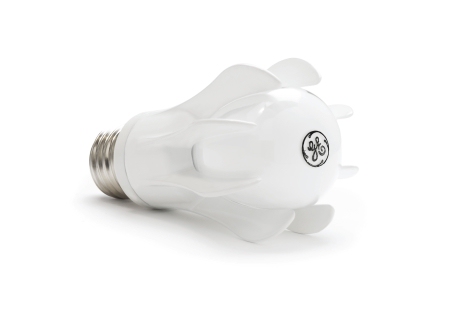Take a look at the photos from your last sun-soaked vacation: the morning light is warm and reddish while the midday sun is much hotter and blue.
Now compare that happy spectrum with the monochrome lights in your home or office, which are the same all day. No wonder you felt glum after you flew home. “Our biology is dependent on the variability of light through the day and through the seasons,” says Gary Allen, a lighting physicist at GE. “Artificial lighting is the same all day long.”
But, in the coming years, physicists expect to unlock the killer app for lighting – a bulb that could wake you up in the morning with sunrise colors, keep you alert during the day with daylight colors and put you to sleep with low-blue light. This bulb could even help regulate our circadian rhythms. The possibilities have opened up because of advances in LED technology, which allow manufacturers to mix different temperatures and colors of light in one bulb.
Our biology is dependent on the variability of light through the day and through the seasons. Artificial lighting is the same all day long.
Not only could we get a light bulb that’s closer to the light of the sun, we could also have control over when we get certain types of light.
This could be useful for people who suffer from seasonal affective disorder or shift workers.
GE’s 9-watt LED, a 40-watt incandescent replacement bulb and the world’s first incandescent-shaped LED bulb to earn an ENERGY STAR® rating. Credit: GE
Jet lagged
Jet lag isn’t just for world travelers. Research by Mariana Figueiro, of the Lighting Research Center at Rensselaer Polytechnic Institute in Troy, NY, shows that the orange and yellow light of incandescent bulbs doesn’t do a good job of keeping us awake and throws off our circadian rhythms in the same way that jet lag does.
How could a light bulb correct this?
To answer that question, you need to understand a bit about how light is classified by temperature and color. Morning light has a lower color temperature (roughly 3,000 degrees Kelvin) than midday light (about 5,000 – 6,000 K), which is roughly the temperature of the sun’s surface.
The easiest way to create a variable spectrum of light through the day, Allen says, is to put two or three different LEDs with different color temperatures into the same light bulb. They would all appear white but some would be warmer than others. “In the morning I can have the 3,000 K (a warm white) only and at night I can have 5,000 K only,” Allen says.
The right color mix
Such a light bulb would be tunable for the color temperature but would not have the sun’s exact colors. The color is important because our eyes have melatonin receptors that respond to the sun’s light. “Our bodies respond to the specific colors, not just the mixture of colors,” Allen says.
There are an almost infinite number of ways to mix colors to get white light – but the sun has a specific recipe. The technology, then, would need to incorporate green, blue and amber LEDs that could be mixed throughout the day to mimic the color composition of the sun’s light at different times of the day.
“It’s not whether I have warm white or cool white,” Allen says. “It has to be the right color mix.”
Remote control
The idea of tunable lights raises all kinds of possibilities for controlling the spectrum, Allen says. You could change the spectrum and temperature with a push-button remote (or a smartphone app) or the lights could automatically cycle through the day. Multiple colors also mean that every room could become a disco.
Or, you could set the lights to automatically respond to sensors in the room.
Improvement curves
There are some universally tunable lights already on the specialty market, but they’re still too expensive for wide application. This is partly because the technology to achieve tunable lights is not yet mature and partly because LEDs themselves are still relatively expensive.
But LEDs, have been rapidly dropping in cost while efficiency increases – a trend predicted by Haitz’s law, which says the amount of light you get out of an LED is doubling every two years and every decade the cost per lumen decreases by a factor of ten. “We’re getting on improvement curves that were followed by the cell phone and the computer,” Allen says.
Once LEDs come down far enough in price, these more exotic applications will start to appear.
Feature image: A GE 9-watt LED bulb.
First appeared on the always awesome GE Ecomagination site.





Comments